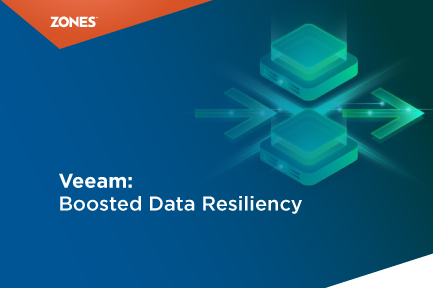Why your organization needs cloud-based Backup as a Service
Protecting data is critical for survival, no matter the type or size of your business – and the problems presented by legacy archive systems are...

In an age where data is the pulse of a market, data safety and disaster recovery optimization cannot be overlooked. Organizations encounter problems ranging from rising costs to the complexities of effective compliance with the rules. This blog sets out to help businesses in disaster recovery through an approach emphasizing a strong backup strategy, including both data protection and resilience.
Data protection is quite a complex problem that requires addressing downtime issues, growing costs, and difficulties in scalability. To deal with these challenges successfully, organizations should adopt a complete backup strategy, which includes selecting the backup, how often it is backed up, how long it is kept, where it is stored, and whether to compress the data. Identifying the critical workloads and processing them with priority based on recovery point objective (RPO) and recovery time objective (RTO) metrics are the key steps in building a proper backup strategy. Backups on the incremental and full modes are essential in balancing protection and contending for resources.
The choice of a backup location is another critical factor, mainly because of the widespread use of cloud-integrated technology. Whether or not to reserve backup files in-house or use cloud services to store data via platforms like AWS Glacier and Azure Archival is an issue that should be dealt with caution. We aim to develop a fail-safe contingency plan that will protect data and improve the efficiency of the Disaster Recovery process end-to-end.
Veeam's 2023 report on data backup and disaster recovery presents some significant numbers, revealing the high necessity of strong countermeasures in the digital world. Ransomware attacks impacted about two-thirds of midsize businesses in the last 18 months, evidence of the growing threat landscape. Moreover, 33% of organizational folders remain open for everyone, further aggravating the data leakage problem. Malware is a considerable factor among the data breaches (around 28%), with 1.01% the average hard drive failure rate.
This information from Veeam's report proves the importance of constantly improving backup and disaster recovery plans. However, 60% of backup copies are incomplete, and the backup restore operation has a 50% failure rate.. Utilizing Veeam's trustworthy backup systems, organizations can unclog the impact of ransomware attacks, malware, and hardware failures, guaranteeing good data continuity.
Veeam emerges as a vital partner in the struggle for disaster recovery optimization. By analyzing how to maximize Veeam backup jobs within their framework, organizations can improve their data protection strategy. Configuring storage optimization settings will help businesses achieve a balance between storage efficiency and data integrity.
Veeam's advanced functionality also supports disaster recovery optimization. Organizations can safeguard their data by following the Three-Two-One principle: having at least three copies of data, two on different media and one offsite. Veeam is not limited to the basics, as it allows for editing backup job configurations, configuring storage optimization settings, and exploring advanced features.
The Three-Two-One principle is the fundamental aspect of disaster recovery optimization. Data must be stored in at least three copies, each on two different media types, with one copy offsite. This safeguard protects the data from equipment failure, natural disasters, catastrophes, etc.
Veeam's solutions incorporate advanced backup features, which play a vital role in optimizing backup jobs. These backups are automated which helps optimize and cut down on IT hands' operations. This not only improves effectiveness but guarantees replication in a consistent and trustable manner. The simple and intuitive interface allows you to configure the networks and their management to obtain a smooth disaster recovery.
In conclusion, disaster recovery optimization needs to take a proactive approach. Organizations must develop a backup strategy that covers every aspect of backup selection, frequency, retention, placement, and compression. Integrating options like Veeam, with top-notch functionality and compliance with the Three-Two-One Rule, gives more depth to the overall data resilience effort. While businesses must navigate the changing environment of data problems, optimizing backup jobs remains critical for providing continuous operation with high resilience.
For a deeper dive into data protection and resiliency, explore our comprehensive use case at Zones Innovation Center and learn how we can optimize our backup and disaster recovery solution to protect your valuable data

Protecting data is critical for survival, no matter the type or size of your business – and the problems presented by legacy archive systems are...

Zones Cloud Solutions and our Advanced Solutions Group make it easy By turning to the cloud for backup and storage, organizations gain rapid and...

2 min read
It’s become clear in recent years that workplace modernization is the key to driving business resiliency. If you give people the latest and best...